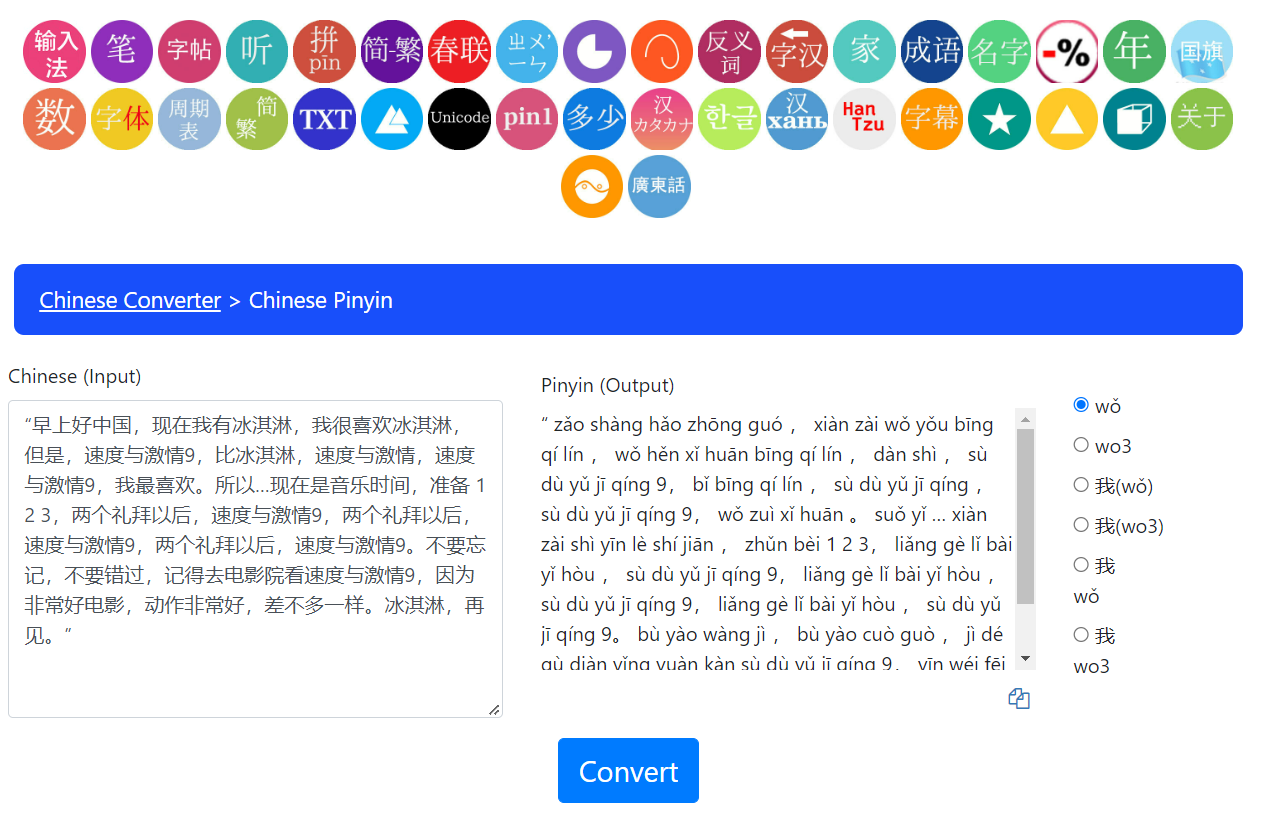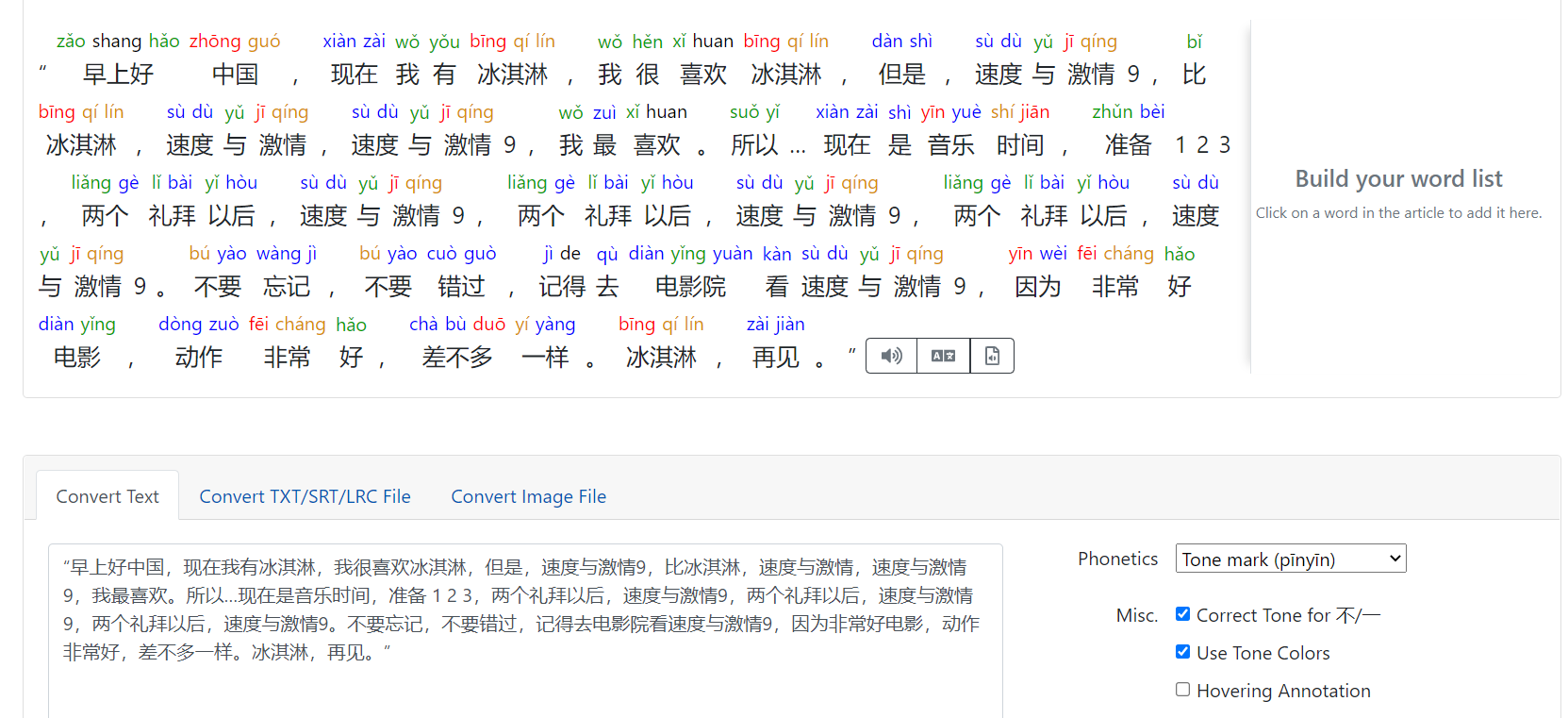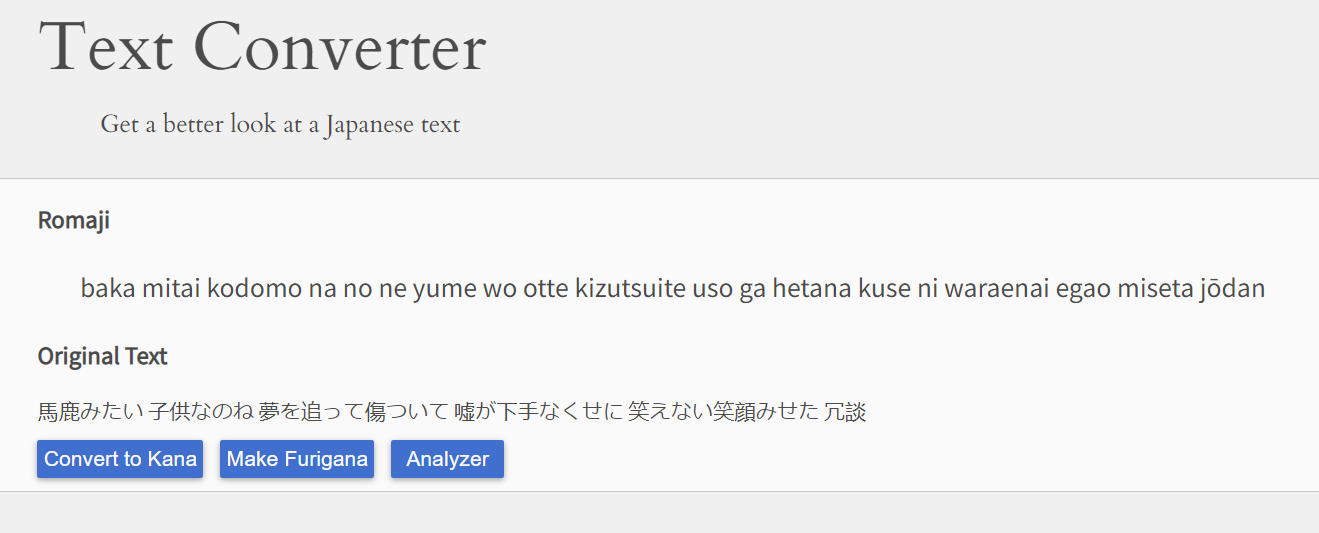Be me, have only a few hours before your deadline ends to be free to enjoy the holidays. Problem: your mind is one big foggy environment and you are racking your brains to find another idea to populate your portfolio. After reading up on your classmate’s posts, one strikes the light of inspiration in you. Here goes.
After reading this post about input methods for the Japanese syllabaries and kanji on QWERTY layout keyboards I remembered all the hours spent transliterating languages in order to create content that fitted the stylistic requirements of the relevant study. To help myself out of misery and provide you a handy overview I centralize my resources in this post. For clarity: none of the content of this article is sponsorised.
Standard Chinese/Standard Mandarin
Ever had to include Chinese characters in your article WITH a pronunciation? Don’t fear, the website Chinese Converter has got you covered! This website is the most complete resource for Standard Mandarin transliteration offering a wide range of free services such as the transliteration of Chinese characters to the Pinyin, Zhuyin, Wade Giles, Japanese and Cyrillic transliteration systems!

Can you guess the meme?
Another resource I used a lot at the start of learning Chinese is Purple Culture’s Talking Chinese to Pinyin/Zhuyin Converter for the simple reasons that 1) the transcription is added as a superscript above the Chinese character input with color-coded tones and 2) the text can be read aloud by the text assistant. Combining these two factors I could easily check my pronunciation and having a presentation in Chinese became a less daunting task.

The glorious color coding, saved me more times than I can count.
Japanese
As for Japanese, the transliteration conventions are fairly straightforward make the use of a transliteration tool not often required. That is with the exception of the Hepburn systems: these systems require a macron – not the French president nor delicacy, but a plain straight line – above an “o” or o “a” u followed by a “u” (ō, ū) and above an “a” that is followed by another “a” (ā). If you need to transliterate to these systems the converter on NihongoDera is your ally. The converter provided on LearnJapaneseTools also works, but only if you write in kana: kanji will remain unconverted.

Is the melody back in your head already?
Protip: If you ever come to have to speak Japanese and want to sound as native as possible, please make use of OJAD’s Suzuki-kun to generate a voice-over with the correct pitch accent. The Japanese language uses pitch accent meaning homonyms are differentiated based on which syllable you pronounce in a higher/lower pitch and this changes in context, illustrated in this video
Korean
The field of Korean studies is a nightmarefun one in terms of transliteration conventions because it is currently in a transitory period between two romanization systems: the McCune-Reischauer Romanization System that has been around since 1937 (the oldest in the game) and the Revised Romanization of Korean promulgated by the Korean government to make transliteration easier. But wait, that is not all! Not all fields use one of these two systems, the field of linguistics uses the Yale Romanization system because it is phonetically more accurate (but it does look awkward). The tool that has been the biggest help to transliterate Korean is the Korean Romanization Converter from the University of Busan because it offers transliteration to all three transliteration systems with extra options for text capitalization.
This was it! Writing this post made me realize how much more of a bumpy ride learning a language was before the internet and its treasure trove of language resources. I hope you found something helpful, I now at least have a post to come back to when I will need to transliterate from these languages. If you also are into transliterating, which tools do you use?
PS: Happy end of the year and have a good rest!
Sources
[1] Payman S. Digital Media, Society, and Culture. 21-12-2022. “Input Method Editors: How Do You Type Non-Roman Alphabets?” last consulted 23-12-2022.
[2] Shudian Ltd. Chinese Converter. “Chinese pinyin.” last consulted 23-12-2022.
[3] Leigh, Zac. NihongoDera. “Test Converter.” last consulted 23-12-2022.
[4] Shudian Ltd. Learn Japanese Tools. “Turn Japanese Into Romanisation.” last consulted 23-12-2022.
[5] Minematsu Laboratory, Grad. School of Eng., The University of Tokyo and Hirose Laboratory, Grad. School of Info. Sci. and Tech., The University of Tokyo. Online Japanese Accent Dictionary. “Prosody Tutor Suzuki-kun.” last consulted 23-12-2022.
[6] Dogen. YouTube. 26-02-2022. “When a Japanese native teaches Japanese pronunciation / 日本語のネイティブが日本語の発音を教えると | Dōgen.” YouTube video, 1:41. last consulted 23-12-2022.
[7] AI Lab & Narainfotech. 2001. Korean Romanization Converter. http://roman.cs.pusan.ac.kr/input_eng.aspx. last consulted 21-01-2023. (the website was down before)



First of all, I applaud you for submitting a blog in a short time frame! I think it’s a smart way to write about something that would be useful for your future self and others. It’s nice how those converters not only help with transliteration but also with the correct pronunciation.
I think for people like you who know these three languages and want to transliterate, the information is organised in a compact way. Thank you for the tips for the Korean converter. Usually I do it manually, because I only need to convert my sources, not a whole text. I feel like an old person whenever I do things manually haha… However, I will give those converters a try and just check it for mistakes.